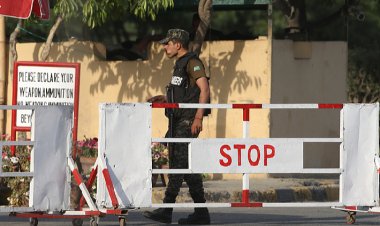Farmers in the Andes Resort to Ancient Methods in Response to Climate Change
When viewed from above, they appear as gigantic, alien-constructed formations, but in reality, these are long-standing farming practices being resurrected to combat climate change on the highland plains of Puno in the Andes.

Upon observing from an aerial view, one could mistake these large, circular designs for the work of extraterrestrials. However, they are in fact an ancient technique resurrected by farmers to battle the encroaching climate crisis on Puno's Andean plateaus.
On the junction of Peru and Bolivia, a traditional method known as Waru Waru, an indigenous Quechua term meaning ridge, is being employed once again to safeguard crops of potato and quinoa, much like how they did two millennia ago in this region.
"This agricultural process allows us to navigate the effects of climate change that have disrupted the traditional seasonal patterns. It provides substantial benefit during periods of dry or frosty weather," remarked 42-year-old farmer, Cesar Cutipa.
Located approximately 3,812 meters above the sea level, Puno is situated beside Lake Titicaca. It is here that farmers have established six Waru Waru structures in the fields prone to flooding.
Furrows are carved to form a rectangular platform where crops are grown. Each bed, encircled by water, spans up to 100 meters in length, varies between four and 10 meters in width, and stands a meter tall.
The surrounding water layers offer a micro-climate, soaking up the sunlight during daylight hours and re-emitting the absorbed heat after dusk, preventing frost in sub-freezing conditions.
"Despite the rainy season, Waru Waru structures can't flood due to their intelligent drainage system that directs water to the river. This system proves to be advantageous in many ways," explained agronomist Gaston Quispe.
In 2023, when Puno was gripped by one of the most severe droughts in nearly sixty years, the Waru Waru system supported farmers to resist water scarcity and stave off food shortages.
The region is primarily inhabited by indigenous farming communities, largely Quechua in Peru's highlands, and both Quechua and Aymara within Bolivia.
"Owing to our potato, quinoa, and barley crops, we get to dwell here peacefully. It provides the comfort of not needing to migrate to the city," shared 22-year-old farmer, Valeria Nahua.
(Video via AFP)
Olivia Brown
Find more stories on the environment and climate change on TROIB/Planet Health












